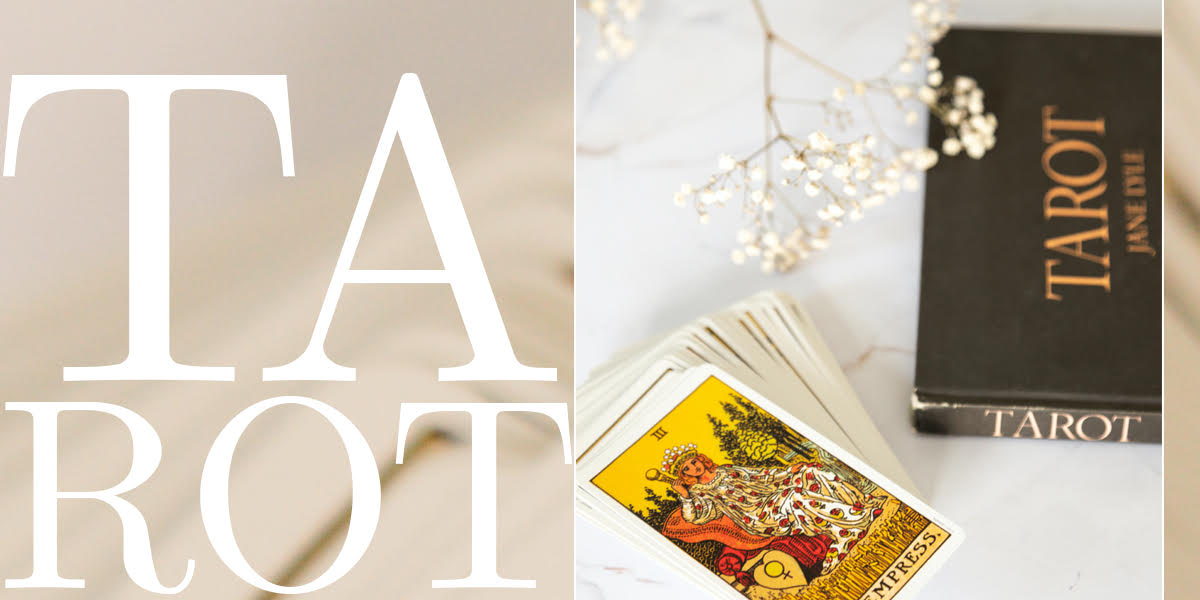
If you had told me five years ago that I would love tarot, I would have laughed. I’ve always been a practical, data-driven person, and to me, tarot was a bit too esoteric and “out there” to be useful.
Tarot can indeed be an intensely spiritual and even mystical ritual for some people, but it can be so much more than that!
In this article, you will discover the world of tarot. Moreover, you will find an answer to the question of “how to read tarot cards for beginners?“. Without further ado, let’s jump into tarot cards.
Tarot Cards for Beginners
For me, tarot is a wonderful tool that I can use to better understand myself, just like taking the Myers-Briggs Type Indicator or the Enneagram test. Our minds are always looking for a way to tell a story or communicate a feeling, and it’s often the case that words and data just won’t cut it.
Tarot is full of archetypes that our minds can immediately recognize, and this makes it easier for us to make sense of the feelings we may be struggling to put into words.
Whether you do a full spread or pick a single card to focus on, tarot can be an excellent psychological tool to help you think through a difficult situation, learn more about your inner self, or simply practice your meditation skills.
Debunking the Myths
Tarot can feel very intimidating, and it might seem like there are a lot of rules to “get it right.” The good news is that this isn’t really true.
First, you don’t have to wait for someone to gift you a deck. This is an old tradition rooted in superstition. It’s much more important to find a deck that you love and feel comfortable with.
Second, you don’t have to be spiritual, religious, superstitious, or magical to use a tarot deck. The cards don’t have to be anything more than images and ideas that help you understand yourself more fully. Remember that tarot cards are not inherently powerful. They have only as much power and meaning as you decide they do!
Good to Know: Guide to Tarot Reading for Mental Health
Choosing Your Tarot Deck
-
Make sure it’s a tarot deck.
This might sound funny, but there are other “spiritual” card decks that are very different from tarot decks. A typical tarot deck will have 78 cards, while something like a Lenormand deck will only have 36. Oracle decks often look similar, but they will have a varying number of cards and much different imagery.
For simplicity, I recommend getting a tarot deck that uses the Rider-Waite-Smith system. It’s the most common and easiest for beginners to start with.
-
Do your research beforehand.
If possible, visit a shop where you can explore decks of different sizes and styles. If that’s not feasible, do some online reading about the different styles and systems used for tarot decks. They are all slightly different, and you might find that one resonates more with you than others.
-
Don’t limit yourself.
You can use as few or as many different decks as you’d like! It’s common for people to have different decks for different moods or readings. For example, you might have one deck that feels best to use when you’re pulling a card for meditation, and a different deck for when you’re trying to work through a difficult situation in your life.
Using Your Deck
Once you have a deck, you might be unsure about where to start. If you’re interested in really understanding how tarot cards are traditionally interpreted, I recommend downloading the Labyrinthos app. It is an invaluable resource for beginners to learn all there is to know about tarot.
My favorite way to use a tarot deck is when I’m having a difficult time communicating effectively. I often struggle to articulate how I feel, and it makes many situations in my personal life more complicated. When I notice that I’m not expressing myself well, I’ll write down a specific question (some people call this “setting an intention” or “querying”), and then I’ll do a card spread that feels right to me.
The cards don’t magically fix the problem or spell out a perfect solution, but they allow me to project whatever I’m struggling with onto simple, meaningful images. In almost every case, this has opened up new lines of thought and helped me understand myself better.
If this doesn’t appeal to you, you can also simply study the cards exactly as they are and learn about all of the symbolism and meaning behind each one. They’re intentionally created to tell a story that arcs through all of the cards. You’ll find that you start seeing these archetypes and noticing related patterns in everyday life that you weren’t aware of before. It’s an interesting psychological exercise!
Finally, you can use a single tarot card as a sort of focal point for your day. Whether it’s for yoga meditation, or it’s something that you dwell on for the entire day and journal about in the evening, having such rich imagery and symbolism for your unconscious mind to chew on is a great way to get your mind working in new ways.
Tarot is an Exciting, Accessible Journey
No matter how you choose to use tarot cards, the most important thing to remember is that YOU are the driving force behind their power. You are in control of how much meaning you derive from the cards, and you are in charge of when, where, and how you use your deck.
I hope this guide to tarot cards for beginners as a practical psychological tool helps you decide to take the time to learn about yourself more fully! You are worth knowing, so any effort you put forth is worthwhile.
Image credit: Viva Luna Studios on Unsplash







